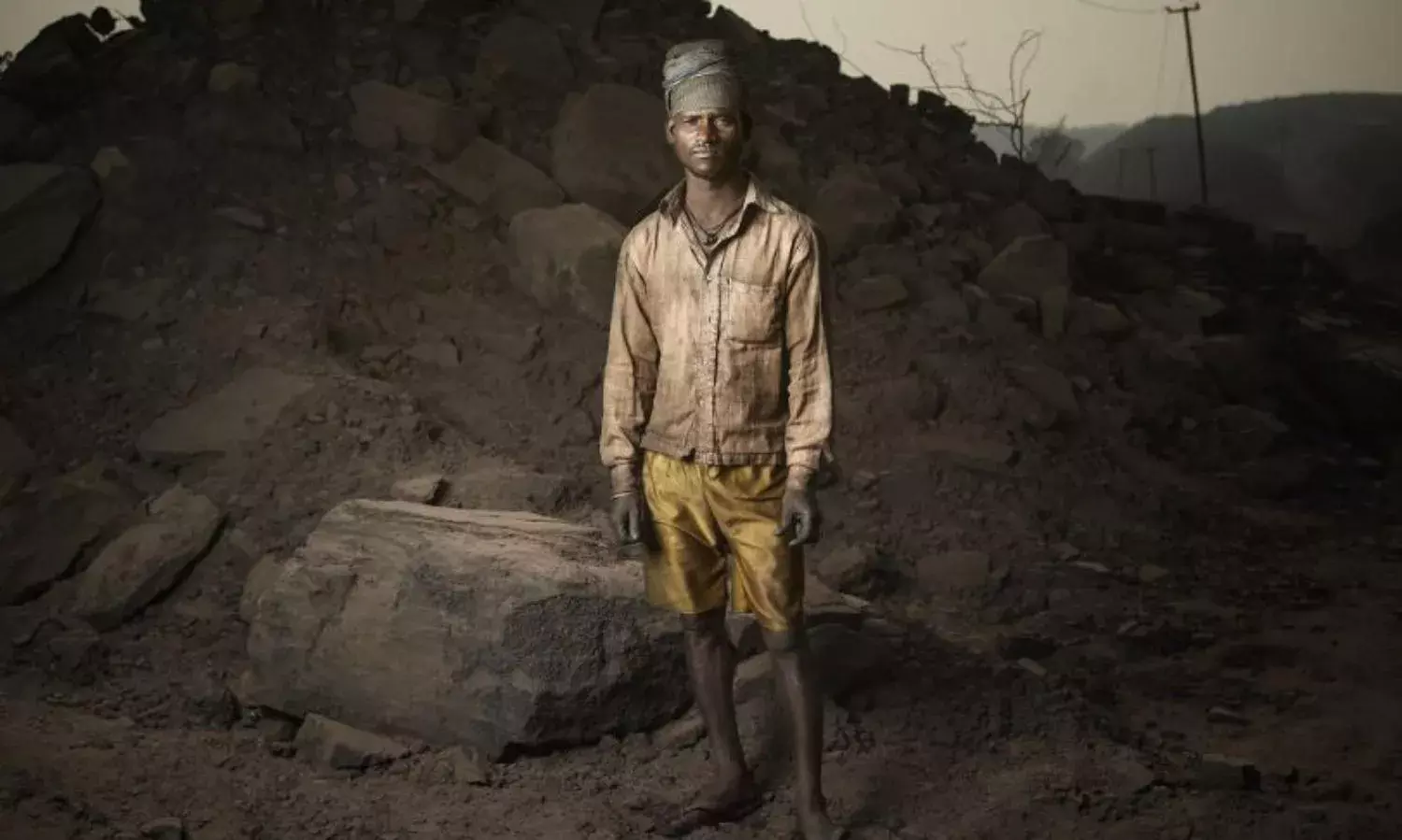Toxic Coal Fires in Jharkhand, Bengal Will Burn for Centuries
There are as many as 82 coal mine fires in Dhanbad, Jharia and Raniganj

RANCHI: Flames and smokes of fire leaping from the earth’s vents or fissures is something that would amaze everyone, but not the residents around India’s primary coal fields that lie in the twin states of Jharkhand and West Bengal.
The latest satellite images show a haze over Jharia and Dhanbad due to mine fires. This is dangerous. By integrating a geological and satellite-derived coal fire map of the Raniganj coal field, it was observed that coal fires detected by remote sensing are spatially associated with intra-formational faults in the dug up crust.
According to the night time thermal data of ASTER (Advance Spaceborne Thermal Emission and Reflection Radiometer), the coal fire map shows that the situation now has turned extremely dangerous needing immediate corrections in the coal seams. But how to do it?
These faults may have played a significant role in supplying oxygen to these coal fires, and allowing them to propagate down depths along the trends of the faultlines.
Mining activities started in this coal belt nearly 175 years back, and people in Jharia first saw coal flames bursting out of the earth’s crust in 1916. These days, as many as 82 coal mine fires in Dhanbad, Jharia and Raniganj are a common sight.
The entire Dhanbad district of Jharkhand and Bardhaman district of West Bengal are practically held at ransom, not only due to the total atmospheric imbalance the coal fires have caused, but also due to 95% pollution of the River Damodar and other water resources, and growing health problems among residents caused by inhalation of carbon monoxide at toxic intensity.
This is because coal is formed from organic matter (plants and animals) with a high carbon content. On being exposed to high temperature, moisture and oxygen, it naturally tends to ignite, and due to methane gas deposits it burns spontaneously and for long at rather low temperatures.
These fires occur through the process of combustion. Coal absorbs oxygen at all temperatures with a slight rise in its temperature. If ventilation is not adequate to take away the heat so formed, more oxygen will be absorbed, and the temperature will rise further. This process continues till it catches fire.
Once a coal seam catches fire, it is almost impossible to stop it. The fire starts to spread to all other coal seams that lie nearby under the earth. Such coal fires continue to burn for tens to hundreds of years, depending primarily on the availability of coal and oxygen.
Coal fires in Raniganj, Dhanbad and Jharia are caused by unscientific ways of mining that began decades ago. They mainly erupt in coal layers that are exposed to the surface of the earth, or areas close to it, causing schisms, fissures, cracks and vents allowing the oxygen to enter. The gush of oxygen in the layers of coal through these fissures further promotes the burning of coal seams.
Coal fires produce large quantities of greenhouse gases such as CO, CO2, CH4, SOx, and NOx, which have a direct impact on the local and global atmospheric composition. Since the preindustrial era, the concentration of CO2, a major greenhouse gas that contributes to global warming, has increased from 280 parts per million to 375 ppm.
Several steps were taken to stop the gush of oxygen by stopping their entry channels into the coal seams over the last 65 long years. But nothing happened. The fires could not be stopped.
Natural factors behind them could have been lightning strikes, forest fires or bush fires. The manmade causes could have been: brewing country liquor in the abandoned mines or making bonfires there.
These coal fires are threatening normal life as they cause a sudden rise in the temperature of the area, pollution of waters, land subsidence, health problems, threats to flora and fauna and total contamination of the atmospheric structure.
Smokes emitting out of coal fires are extremely toxic for human beings as they contains poisonous gases such as oxides and dioxides of carbon, nitrogen and sulphur. They usually cause respiratory troubles, chronic bronchitis, asthma and blood poisoning.
Even the crops or fish that you consume from the coal belt are poisoned by these coal fires. They make the surrounding water totally acidic.
The villages of Sanctoria, Nimcha, Toposi Raniganj, Ratibati, Samdi and Sangramgargh coal belts in Raniganj district of Bardhaman are suffering from huge atmospheric and aquatic corruptions. These can hardly be corrected now after so many decades of emission of poisons from coal fires.



